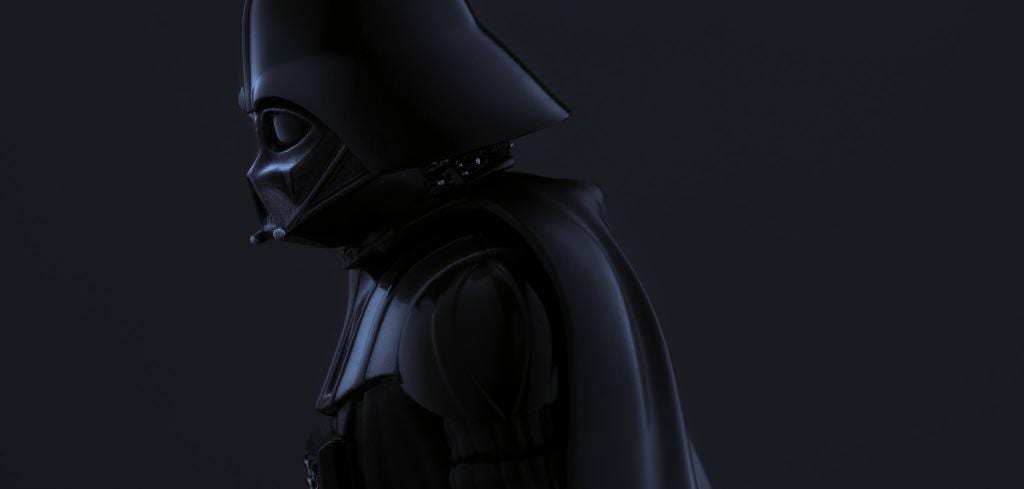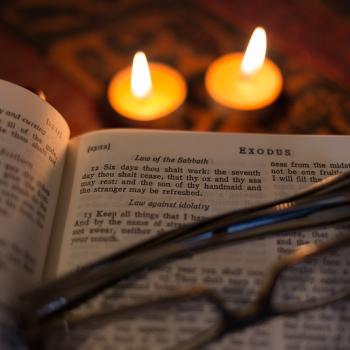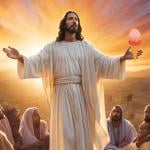
Intergalactic Twist
Luke Skywalker was my childhood hero. He worked diligently to become a Jedi Knight, saved the rebel alliance from ultimate destruction, and conquered the forces of evil. In a nutshell, he was the star of the blockbuster trilogy Star Wars—or so I thought.
Long after the series seemed to have ended, there were rumors of a prequel (or, more accurately, a threequel). I was skeptical at first, but my cynicism abated shortly after I purchased a copy of the original trilogy prefaced by interviews with producer George Lucas. Those interviews changed how I viewed both the storyline of Star Wars and, interestingly, the book of Ruth.
Toward the end of the Empire Strikes Back (Episode V), arch villain Darth Vader made the paradoxical claim that he was Luke’s father. We were stunned. How could this be? Befuddled fans debated this claim until it was finally confirmed in the final episode, Return of the Jedi. Still many of us wondered what the point was.
At the series’ end it began to make sense: Darth Vader, formerly Anakin Skywalker, would be redeemed. He would atone for his sins by personally vanquishing the wicked Emperor while being martyred in the process. As a result, he was united with his forefathers who dedicated their lives to advancing the good side of the Force.
I have to admit that when all of this transpired I was oblivious to its full significance. It seemed like a mere add-on, the product of an eleventh hour brainstorm designed to spruce up a perfectly fine story of how my hero Luke climbed the ranks of Jedi knighthood to single-handedly bring down the evil empire. I assumed this, of course, because I had not seen the entire series and because modern culture had trained me well how to identify heroes. Luke embodied the stuff of which all good heroes are made: good looks, interesting friends, humble origins, and a free spirit.
When I watched the George Lucas interviews, however, I discovered how badly these assumptions failed me. In them Lucas discusses how his epic’s plot actually hinges on the redemption of Anakin Skywalker. It was no mere subplot. And after the prequels are released, explained Lucas, the waiting world will finally grasp the centrality of Darth Vader. Until then, in Lucas’s words, “The real story hasn’t even been told yet.” Despite my childhood understanding, Luke was not the star of Star Wars; his father was.
Naomi Neglected
As Luke’s heroism overshadowed his father’s redemption in the Star Wars movies, Ruth’s noble character typically overshadows the centrality of her mother-in-law’s redemption in the biblical story. That is, the book of Ruth is often read in one of three ways, all of which portray Ruth as the star.
- One reading emphasizes Ruth’s faithfulness to Naomi in remaining by her mother-in-law’s side and, in turn, God’s faithfulness to Ruth in providing her with a wonderful husband.
- Another telling summarizes the book as a love story, dwelling upon Ruth’s romantic encounters with Boaz.
- A third reading focuses on the genealogical connection to David in the final sentences and stresses his lineage from such humble and faithful individuals as Ruth.
While each of these readings is helpful and highlights important aspects of the book, unless they acknowledge the centrality of Naomi, the real story has yet to be told.
Naomi Acknowledged
One may often get to the heart of a narrative by paying careful attention to how it begins and how it wraps up. These bookends are crucial in setting the context for a story’s plot and without them the reader will miss a great deal of the author’s intent. The book of Ruth is no exception.
In the Beginning
The story opens with Naomi, a Jewish woman, who recently lost both her husband and her only two sons. She considers this no mere accident, but rather a deliberate act of God. In her words, “The hand of the lord has turned against me” (1:13). When she returns to her home town of Bethlehem with Ruth in tow, the townswomen are mortified at her loss and Naomi asks them to address her by a new name—a name more appropriate to her trials, saying:
Call me no longer Naomi [meaning pleasant], call me Mara [meaning bitter], for the Almighty has dealt bitterly with me. I went away full but the lord has brought me back empty; why call me Naomi when the lord has dealt harshly with me and the Almighty has brought calamity upon me? (1:20-21).
Naomi’s complaints are not rhetorical flourish. They are the author’s explicit means of establishing the book’s central crisis: Is Naomi right? Has Yahweh forsaken her and shamed her household? If Naomi’s plight were indeed the thrust of the story, then one would expect the rest of the book to resolve this crisis, particularly at the end. This is precisely what happens.
In the Middle
Of course Ruth remains faithfully by Naomi’s side and soon meets with Boaz who eventually marries her. But these events are not narrated in such a way as to draw attention to Ruth, as if for Ruth’s own sake. Rather they are evidence that Yahweh has not forsaken Naomi after all. On the contrary, he intends to give a new start to her terribly marred life.
This is how Naomi interpreted these events as they unfolded. When Boaz graciously welcomes Ruth to glean from his fields, Naomi is not concerned for Ruth’s love life. Instead, she focuses upon God’s action on her own behalf, saying: “Blessed be [Boaz] by the lord, whose kindness has not forsaken the living or the dead!” (2:20). This verse reveals Naomi’s conviction that God is providing for her by sending Boaz to marry her daughter-in-law. Through their relationship, Naomi realizes that her husband’s name and land may be preserved and her own dignity as a Jewish woman may be restored.
For Naomi, this means a future. She (the living) and her husband (the dead) will not be written off as a dead branch in Israel’s family tree. Boaz also understands the situation in this way. At the town gate, he proclaims before the elders that he is redeeming the land and marrying Ruth—not because he finally found the woman of his dreams, but “in order that the name of the dead may not be cut off from his kindred” (4:10).
In the End
This reading is confirmed by how the author concludes the story. Notice what does not happen. When Ruth and Boaz have a son, the three of them do not settle into a quaint little house with a white picket fence to live happily ever after. Furthermore, the townswomen do not boast over Ruth’s good fortune or fine taste in men. Instead, all eyes are on Naomi:
Then the women said to Naomi, “Blessed be the lord, who has not left you this day without next-of-kin; and may his name be renowned in Israel! He shall be to you a restorer of life and a nourisher of your old age” (4:14-15).
Then something quite scandalous takes place. Naomi takes the child from Ruth, places him upon her own bosom and becomes his nurse (4:16). This means the child was officially entrusted to Naomi. This is confirmed by the townswomen’s exclamation in the following verse: “A son has been born to Naomi!” – not Ruth.
Modern sensibilities have been clearly violated here. Does not this child rightfully belong to the parents? Are not Ruth and Boaz better able to provide a stable, nurturing environment in which little Obed might flourish? Ruth has lost complete control. She’s not even allowed to name the boy; Naomi’s friends do that (4:17). Indeed, by the end of this story Ruth has all but faded from view.
Naomi Vindicated
We thus see that even though they are from completely different worlds (not to mention galaxies), Naomi and Anakin Skywalker share much in common. Incomplete tellings of their own stories have diminished their rightful place in their respective dramas. While invaluable and irreplaceable as supporting cast, Luke and Ruth were never intended to eclipse the true stars.
*** For an excellent introduction the book of Ruth that focuses more on the person of Ruth, see Sam Long’s post.













